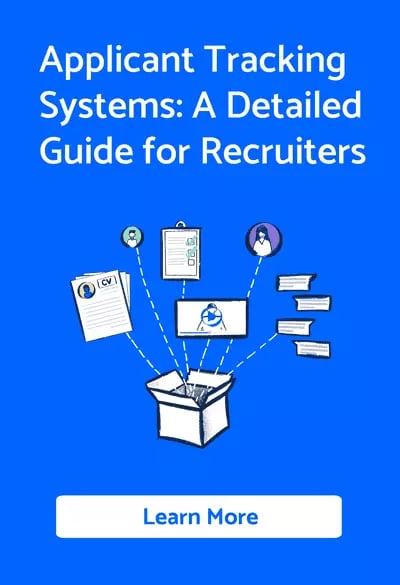In the ever-evolving landscape of talent acquisition, social media has emerged as a powerful tool for engaging passive candidates - those highly skilled professionals who aren't actively seeking new employment opportunities but might be open to the right offer.
With over 4.2 billion active social media users worldwide, according to We Are Social's Digital 2021 report, it's no wonder that 79% of job seekers use social media in their job search, as reported by Glassdoor.
For SMBs looking to attract top talent, mastering the art of engaging passive candidates on social media can be a game-changer. Here, we'll explore seven effective strategies to help you connect with these elusive yet valuable potential hires.
1. Build a strong employer brand
Your employer brand is the foundation of your social media engagement strategy. It's the way potential candidates perceive your company culture, values, and mission. To attract passive candidates, you need to showcase what makes your SMB unique and appealing. Consider the following:
- Highlight your company's mission and values: Share stories and examples that demonstrate how your company is making a positive impact in your industry or community.
- Showcase your company culture: Give candidates a glimpse into what it's like to work at your SMB by sharing photos and videos of team events, office spaces, and employee testimonials.
- Emphasise your employee value proposition: Clearly communicate the unique benefits and perks your SMB offers, such as flexible work arrangements, professional development opportunities, or innovative projects.
According to a LinkedIn survey, 75% of job seekers consider an employer's brand before even applying for a job. By building a strong and authentic employer brand on social media, you'll attract passive candidates who align with your company's values and culture.
2. Leverage employee advocacy
Your employees are your best brand ambassadors. Encourage them to share their experiences and insights about working at your SMB on their personal social media accounts. This authentic, user-generated content can be more effective in engaging passive candidates than corporate messaging. Consider the following:
- Implement an employee advocacy programme: Provide guidelines and incentives for employees to share company content and job openings on their social media profiles.
- Encourage employee-generated content: Ask employees to share their own stories, photos, and videos that showcase your company culture and values.
- Amplify employee voices: Share and engage with employee posts on your company's social media accounts to increase visibility and credibility.
According to a study by MSLGroup, brand messages shared by employees on social media get 561% more reach than the same messages shared by the brand's social media channels. By leveraging employee advocacy, you can expand your reach and engage passive candidates with authentic, relatable content.
3. Engage in industry conversations
Passive candidates may not be actively looking for job opportunities, but they're likely staying up-to-date with news and trends in their industry. By participating in relevant online conversations and communities, you can establish your SMB as a thought leader and attract the attention of passive candidates. Consider the following:
- Join industry-specific groups and forums: Engage in discussions, share insights, and answer questions in online communities where your target candidates are active.
- Participate in Twitter chats and LinkedIn Live events: Join or host live discussions on topics relevant to your industry, showcasing your expertise and engaging with potential candidates in real-time.
- Share industry news and insights: Curate and share articles, reports, and other content that demonstrates your company's knowledge and passion for your industry.
According to a report by Demand Gen, 95% of B2B buyers consider content as trustworthy when evaluating a company and its offerings. By engaging in industry conversations and providing valuable content, you can build trust and credibility with passive candidates.
4. Spotlight your team and culture
Passive candidates may not be actively seeking job opportunities, but they're often curious about the people and culture behind successful companies. By spotlighting your team members and showcasing your company culture on social media, you can pique the interest of potential hires and demonstrate what makes your SMB a great place to work. Here’s what you can do:
- Share employee spotlights: Highlight individual team members, their roles, achievements, and personal interests to give passive candidates a sense of the people behind your brand.
- Showcase team events and activities: Share photos and videos of company outings, celebrations, and team-building activities to demonstrate your positive and engaging work environment.
- Highlight diversity and inclusion initiatives: Showcase your company's commitment to creating a diverse and inclusive workplace, which is increasingly important to job seekers. According to a Glassdoor survey, 76% of job seekers and employees report that a diverse workforce is an important factor when evaluating companies and job offers.
By spotlighting your team and culture on social media, you can create a more human and relatable image of your SMB, which can be particularly appealing to passive candidates who value a positive work environment.
5. Create and share valuable content
To engage passive candidates on social media, you need to provide value beyond job postings. By creating and sharing informative, entertaining, or inspiring content related to your industry or company, you can capture the attention of potential hires and demonstrate your expertise. Consider the following types of content:
- Blog posts and articles: Share insights, tips, and thought leadership pieces that showcase your company's knowledge and passion for your industry.
- Infographics and data visualisations: Present industry data, trends, or best practices in visually engaging formats that are easy to share on social media.
- Videos and podcasts: Create short, digestible video or audio content that highlights your company culture, team members, or industry expertise.
According to a study by Orbit Media Studios, the average length of a blog post is 1,269 words, and longer content tends to generate more shares and engagement on social media. By creating high-quality, in-depth content, you can establish your SMB as a valuable resource for passive candidates.
6. Utilise paid social media advertising
While organic social media engagement is essential, paid advertising can help you reach a wider audience of passive candidates who may not be following your company's accounts. Platforms like LinkedIn, Facebook, and Instagram offer sophisticated targeting options that allow you to reach users based on their job titles, skills, interests, and behaviours. Consider the following strategies:
- LinkedIn Sponsored Content: Promote your best-performing blog posts, videos, or job openings to a targeted audience of professionals who match your ideal candidate profile.
- Facebook and Instagram Ads: Use engaging visuals and compelling copy to showcase your employer brand and target passive candidates based on their interests and demographics.
- Retargeting campaigns: Use cookies to serve ads to users who have previously visited your website or engaged with your content, keeping your SMB top-of-mind for passive candidates.
According to a report by eMarketer, LinkedIn is the most effective social media platform for B2B lead generation, with 80% of B2B leads coming from the platform. By leveraging paid social media advertising, you can expand your reach and engage passive candidates who are most likely to be interested in your company.
7. Monitor and engage with your brand mentions
Passive candidates may not be actively engaging with your company's social media accounts, but they could be talking about your brand online. By monitoring your brand mentions and engaging with these conversations, you can identify potential hires and demonstrate your company's responsiveness and interest in their opinions. Consider the following:
- Set up alerts for brand mentions: Use tools like Google Alerts, Hootsuite, or Mention to track online conversations about your company across social media platforms, forums, and news sites.
- Respond to positive and negative feedback: Thank users for their positive comments and address any concerns or criticisms in a professional and empathetic manner.
- Encourage conversation: Ask questions, seek feedback, and invite users to share their experiences or opinions related to your brand or industry.
According to a study by Sprout Social, 70% of consumers feel more connected to a brand when the CEO is active on social media. By actively monitoring and engaging with your brand mentions, you can humanise your SMB and build stronger connections with passive candidates.
In conclusion, engaging passive candidates on social media requires a multi-faceted approach that combines employer branding, employee advocacy, industry thought leadership, and targeted advertising. By consistently providing value, showcasing your company culture, and actively monitoring and engaging with your brand mentions, you can build relationships with potential hires and position your SMB as an attractive employer. Remember, the key to success is authenticity, relevance, and persistence. With the right strategy and execution, social media can be a powerful tool for attracting top talent to your growing business.





